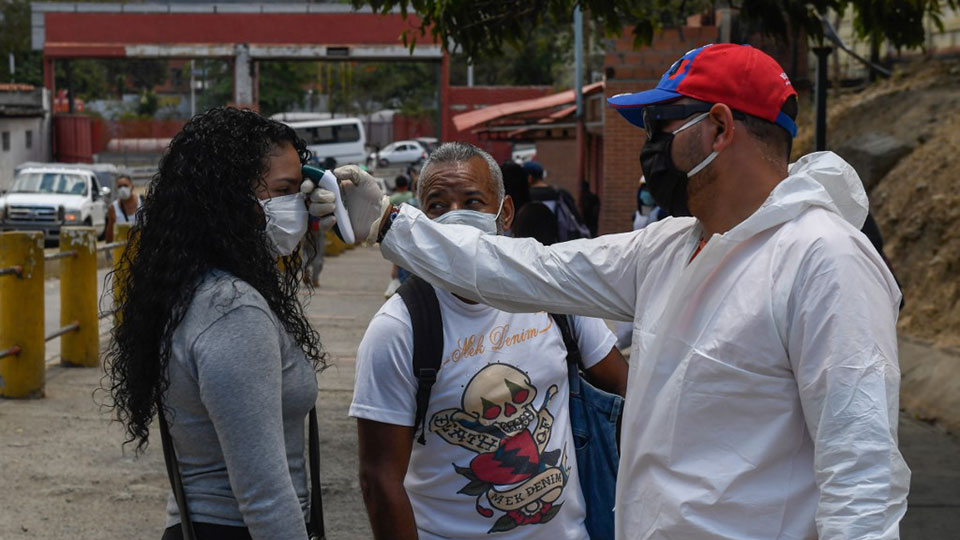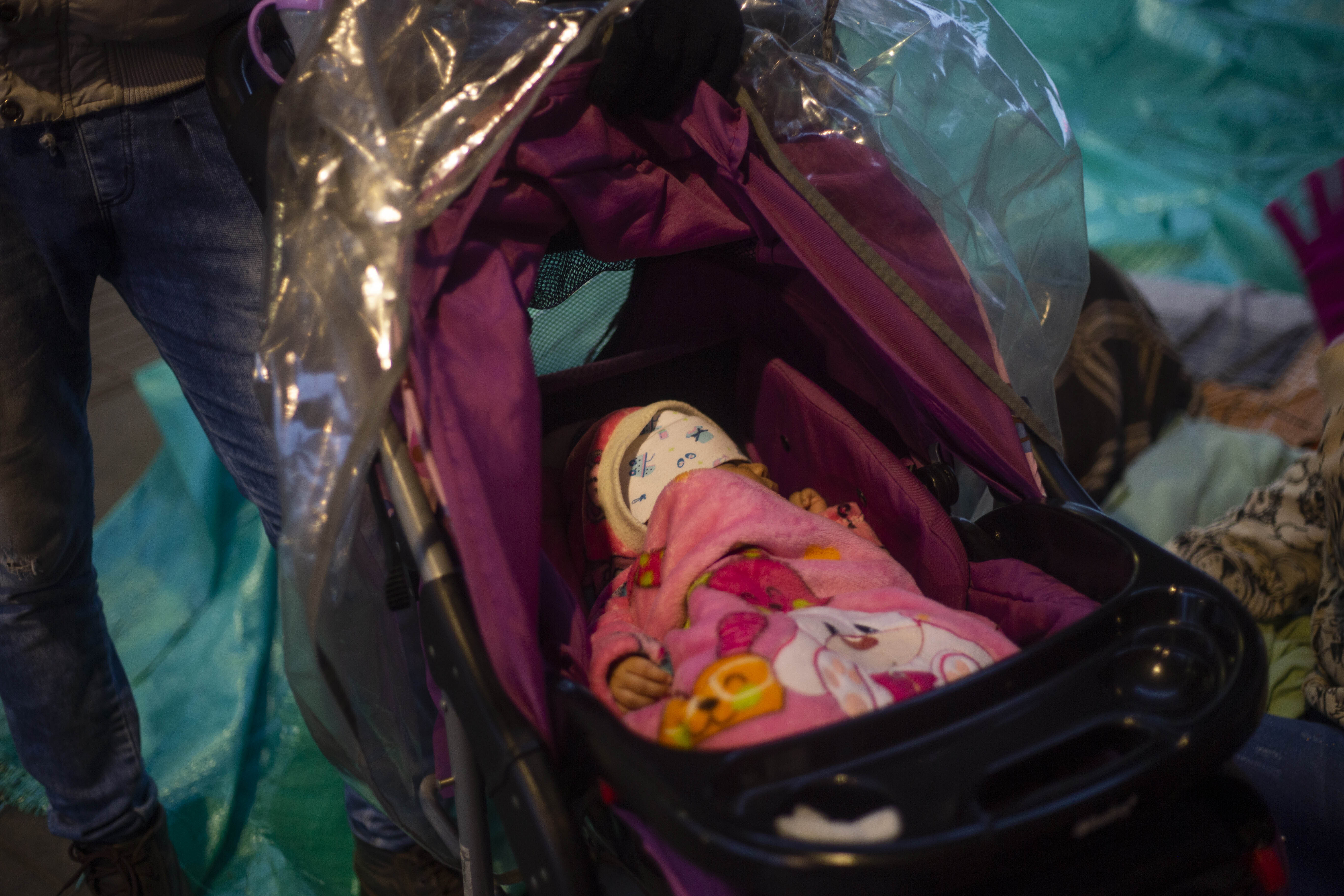
Editor's Note: Guy Burton is a visiting fellow at the Middle East Center of the London School of Economics and an adjunct professor at Vesalius College, Brussels. The article reflects the author's opinions and not necessarily the views of CGTN.
Since the start of the year, the COVID-19 pandemic has moved westward, from East Asia to the Middle East, Europe, and North America. Now it is starting to hit the global South, including Latin America. The situation is concerning, not only for the impact it is having on countries' health care systems but also for the economic costs that are expected. Yet, at the same time, there may be some silver linings, both in the efforts of individual governments as well as a revitalization of public support for democracy.
First, in terms of the public health challenge, Marcos Espinal of the Pan American Health Organization said last month that June was a "critical month". When he said this, he believed that this would be especially the case for those countries that implemented early measures to contain the virus. Should they prove effective, they should start to reap the benefits in terms of fewer infections and less pressure on their health care systems.
Espinal's words came just as the number of cases in Latin America was set to increase. Between May and June, the total number increased by over a million. Brazil led the way around 960,000 cases, followed by Peru with 240,000, Chile with 184,000, and Mexico with 160,000.
Brazil's coronavirus experience has arguably received the most international attention, and for all the wrong reasons. There, President Jair Bolsonaro has made light of the virus, claiming it is "little flu" and opposing the efforts by state governors and mayors to introduce quarantine measures. Throughout the crisis, he has appeared at public rallies with his supporters, appealing for Brazilians to return to work.
By contrast, Argentina's response was initially perceived as more successful than Brazil's, especially during the early stages. President Alberto Fernández imposed compulsory stay-at-home orders alongside a travel ban and a generous social security package for low-income and informal workers.
Despite its measures, however, Argentina has since seen the number of cases quadruple after easing restrictions over the past month. Fernández has also opted to go into voluntary isolation while other leading politicians have apparently contracted the virus.
The experience of both Argentina and Brazil highlights the tension presented by the pandemic. On one side, strict isolation measures help contain the spread of the virus and help reduce pressure on hospitals, doctors, and nurses. On the other side, those restrictions have made it harder for the region's economies to operate. In addition, it has put many people in a difficult position, since those nearly half of Latin Americans work in the informal sector, where jobs and income are precarious. Such people tend to have fewer savings to tide them over during lockdown and have less access to state-provided social security to compensate for the loss of work.
The overall forecast for the regional economy is not positive. Last October, the IMF observed that GDP growth had fallen from 1 percent in 2018 to 0.2 percent in 2019. Although it projected GDP to rise by 1.8 percent this year, that forecast was revised. In April, it announced that GDP would fall by 5.2 percent, which would be larger than previous contractions in the 1980s and 2009.
With many of the governments seeking to limit transmission of the virus in recent months, their responses have been varied, but have generally involved some degree of state support for businesses and households who have had to forego work and income. Peru, Chile, and Brazil (the latter through congressional rather than presidential effort) have produced the largest packages, but others have not been able to fund such comprehensive aid. Writing for Americas Quarterly, economists Eduardo Levy Yeyati and Andés Malamud point out that limited levels of assistance are compounded by a lack of private foreign capital to finance such packages, alongside high levels of public debt which will store up problems of repayment later on.

Immigrants sleep under a bridge waiting for government aid to restrain their country, Venezuela, due to the spread of COVID-19. /AP
Immigrants sleep under a bridge waiting for government aid to restrain their country, Venezuela, due to the spread of COVID-19. /AP
This gloomy state of affairs may only serve to exacerbate present frustrations in the region. According to the Latinobarómetro opinion poll, between 2008 and 2018, the proportion of Latin Americans who are dissatisfied with democracy increased from 51 to 71 percent.
Growing discontent with democracy should be set in the wider context facing the region. Over the past decade, Latin American countries have experienced an economic slowdown, which contrasts with the economic boom between 2000 and 2009.
Public discontent has manifested itself in protest against poor job prospects, deteriorating quality of life, and public services, as well as anger against ruling elites to failing to address these issues. Last year among the most prominent examples of protest were in Bolivia, Ecuador, and Chile. Although the reasons for the mobilizations had specific local reasons, the contemporaneous nature at the end of last year prompted discussion regarding whether this was a broader challenge against the region's governments.
While the protests dissipated in Bolivia and Ecuador, they continued in Chile until this year. But following the government's imposition of quarantine measures, they were similarly halted.
In addition to curbing the protests, the government in Chile has also delayed a referendum on whether or not to rewrite the constitution until later in the year. Elsewhere, other governments have also postponed elections, including for the president in Bolivia and the Dominican Republic, as well as local elections in Peru, Colombia, Brazil, and Mexico.
Despite public disillusion with democracy, it is not certain that Latin American publics will take kindly to being denied their right to vote. Few seem to oppose the idea of democracy, and most believe that their countries are still democratic. That is the case, including in Venezuela and Nicaragua, which have the largest numbers who think their country is not democratic (37 and 35 percent, respectively).
The continuing commitment to democracy may help both governments and society in Latin America ride out the current pandemic. Indeed, Levy Yeyati and Malamad argue that the pandemic has exposed differences between those governments who have acted effectively and those who have not.
Bolsonaro is a prime example of government ineffectiveness. As well as downplaying the coronavirus, he has demonstrated a shaky commitment for democracy. He has criticized the institutions of Brazilian democracy, congress, and the supreme court, which he believes seek to bring him down. He has also spoken approvingly of the military regime, which governed Brazil until 1985.
Tragic as it seems then, Bolsonaro's stance means that his failure of leadership will be synonymous with a worsening of the health crisis in Brazil. But it may also provide a cautionary tale for others like him who disregards the government's responsibility to protect its citizens.
(If you want to contribute and have specific expertise, please contact us at opinions@cgtn.com.)